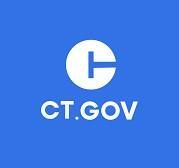Blog Layout
Coronavirus Aid, Relief, and Economic Security (CARES) Act and the Impact on Business Funding
The funding would be focused on maintaining payroll, and costs could be forgiven if participating companies met specific requirements.
For business loans, the two main points of the act are the expansion of the small business administration loan program and the subsequent forgiveness of loan program. Small businesses, those with 500 employees or fewer, would receive $350 billion in emergency funding. The funding would be focused on maintaining payroll, and costs could be forgiven if participating companies met specific requirements.
About one-quarter of the bill's sum is set aside for larger companies. These companies borrowing from the pool would be barred from paying dividends to shareholders or issuing stock buybacks until one year after they pay back their loans. The companies would also be forced to limit executive compensation.
The specifics:
Small business Administration Loans
The act increases the maximum Small Business Administration's loan to $10 million and expands the allowable uses to include payroll support (including paid sick or medical leave), employee salaries, mortgage payments, insurance premiums and any other debt obligations. The loan period begins February 15, 2020 and ends on December 31, 2020.
There are eligibility qualifications which need to be met to obtain a loan. The company:
Must have been operational on February 15, 2020, and
had employees for whom the borrower paid salaries and payroll taxes, or paid independent contractors, and
is substantially impacted by public health restrictions related to COVID-19. Eligible borrowers would be required to make good faith certification that they have been affected by COVID-19 and will use funds to retain workers and maintain payroll and other debt obligations
There is no requirement to evaluate the borrowers' ability to repay the covered loan or that the borrower not be able to find credit elsewhere.
Loan amount and purpose
Eligible borrowers will be allowed to borrow up to the lesser of (i) $10 million or (ii) the business's average total monthly payroll costs during the one-year period prior to the loan being made multiplied by 2.5. Payroll costs include salaries, wages, tips, payments for sick leave, insurance premiums and state and local taxes assessed on the compensation of employees, but does not include compensation of individual employees in excess of annual salary of $100,000, as prorated for the relevant period. The loan proceeds may be used to cover payroll costs, mortgage, rent and utility payments, and interest on other debt obligations incurred prior to February 15, 2020.
Loan Forgiveness Program
Borrowers will be eligible to apply for loan forgiveness equal to the amount spent by the borrower during an 8-week period after the loan closing date on payroll expenses, interest (not principle) on mortgages, rent and utility expenses, in each case that were in place before February 15, 2020.
The amount forgiven is reduced proportionally by any reduction in employees retained compared to the previous year and by the reduction in pay of any employee beyond 25 percent of the prior year's compensation; however, reductions in pay for employees who have an annualized salary of more than $100,000 are not considered in this calculation.
Borrowers who re-hire workers previously laid off between February 15 through April 1, 2020 shall not have those numbers counted against them during such period for loan forgiveness purposes, so long as they are rehired by June 30, 2020.
The cancelled indebtedness is not taxable income to the borrower, and upon a lender's report of expected loan forgiveness for a covered loan or pool of covered loans, the SBA will purchase such amount of the loan from the lender.
Lastly, it is important to note that this portion of the CARES Act is not the same as the SBA economic injury disaster loan program that is already available, nor may it be used for the same purpose.
If you have any questions or concerns, please contact the partner or accountant in charge of your account.

October 25, 2024
Burzenski & Company once again supported an event at the Children's Center in Hamden. On October 24, three employees volunteered to be onsite for the Children's Center Trunk or Treat Halloween event. Callie Kutys, Shelly Panico and Carmen Rosado donned costumes and handed out candy to about 100 children. Booooooooo!

September 5, 2024
On Thursday, August 29th, we held our annual state-of-the-firm and company picnic at Owenego Inn located in Branford, CT.
The firm recognized the 40th employee anniversary of Partner Melody Mann Fox, CPA. Managing Partner Bill Kalinowski congratulated Melody on her tenure and accomplishments with the firm. Said Ralph L. Ricciardelli, CPA, Emeritus, a founding partner of Burzenski & Company, PC, “Mel, 40 years where does the time go? It’s not easy to build a firm and you’ve done it with a lot of grit, expertise, and professionalism. You have been integral in building the firm. You’ve been integral in helping with the staff, whether it was the administrative staff or the accounting staff. I don’t know what we would do without you. There aren’t enough words of appreciation that we can give to you.”
It was a great day for employeea to play games such as bocce, corn hole, Jenga, and a trivia contest with staff split up into teams.

September 1, 2024
At the firm's annual state-of-the-firm and company picnic on August 29th, we recognized the 40th employee anniversary of Partner Melody Mann Fox, CPA. Managing Partner Bill Kalinowski congratulated Melody on her tenure and accomplishments with the firm.
Said Ralph L. Ricciardelli, CPA, Emeritus, a founding partner of Burzenski & Company, PC, “Mel, 40 years where does the time go? It’s not easy to build a firm and you’ve done it with a lot of grit, expertise, and professionalism. You have been integral in building the firm. You’ve been integral in helping with the staff, whether it was the administrative staff or the accounting staff. I don’t know what we would do without you. There aren’t enough words of appreciation that we can give to you.”Mel, 40 years where does the time go? I remember when you first came to us in 1984 as a staff person. Our first tax season together was 1985. There was a lot of fun things that happened during those early years that laid the ground work for the future.

August 18, 2024
2024 Connecticut Sales Tax Free Week
Highlights
The 2024 Sales Tax Free Week is Sunday, August 18, through Saturday, August 24, 2024.
Sales or purchases of certain items of clothing or footwear costing less than $100 per item are exempt from sales tax.
This special exemption applies to purchases made from retailers located in Connecticut as well as from on-line retailers.
This year will be Connecticut's 25th Sales Tax Free Week.https://portal.ct.gov/drs/sales-tax/sales-tax-free-week

July 22, 2024
Sarah Williams, formerly of Abilene, TX, has joined the staff at Burzenski & Company, as a Staff Accountant. She earned a Bachelor of Business Administration degree as well as a Master of Accountancy degree from Abilene Christian University in Abilene, TX.
Prior to joining our firm, she was as a Tax Associate.
She has two cats named Fig and Peach.
terms & conditions |
privacy policy |
cookie preference center
© Copyright 2025 Berry, Dunn, McNeil & Parker, LLC All Rights Reserved.




